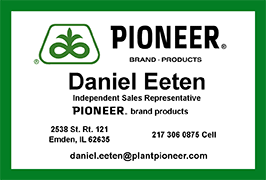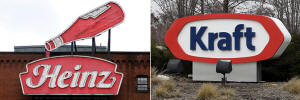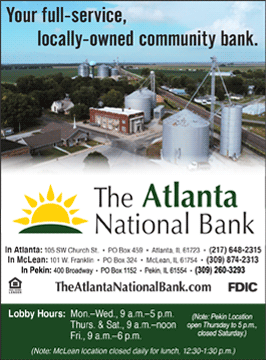Kraft Heinz to split a decade after megafood merger
[September 02, 2025] By
DEE-ANN DURBIN and MICHELLE CHAPMAN
NEW YORK (AP) — Kraft Heinz is splitting into two companies a decade
after they joined in a massive merger that created one of the world's
biggest food companies on the planet.
One of the companies will include shelf stable meals and include brands
such as Heinz, Philadelphia cream cheese and Kraft Mac & Cheese, Kraft
Heinz said Tuesday. The other will include brands such as Oscar Mayer,
Kraft Singles and Lunchables. The names of the two companies will be
released later.
Kraft Heinz said in May that it was conducting a strategic review of the
company, signaling a potential split.
“Kraft Heinz’s brands are iconic and beloved, but the complexity of our
current structure makes it challenging to allocate capital effectively,
prioritize initiatives and drive scale in our most promising areas,”
Executive Chair Miguel Patricio said in a statement.
The path to the merger of Kraft and Heinz began in 2013, when
billionaire investor Warren Buffett teamed up with Brazilian investment
firm 3G Capital to buy H.J. Heinz Co. At the time, the $23 billion deal
was the most expensive ever in the food industry.
3G was also behind the formation of Restaurant Brands International — a
merger of Burger King, Tim Hortons and Popeyes — and Anheuser-Busch
InBev. It’s known for strict cost controls and so-called zero-based
budgeting, which requires all expenses to be justified each quarter.

The deal was intended to help Heinz, which was founded in 1869 in
Pittsburgh, expand sales of its condiments and sauces on grocery store
shelves. Heinz’s new owners also set about cutting costs, laying off
hundreds of workers within months.
At the same time Kraft, based in Chicago, sought for a partner after a
2011 split from its snack division, which became Mondelez International.
In 2015, Buffett and 3G decided to merge Heinz with Kraft. The merger
created the 5th largest food and beverage company in the world, with
annual revenue of $28 billion. Buffett and 3G each contributed $5
billion for a special dividend for Kraft shareholders.
[to top of second column] |

At left, in a March 25, 2015, file photo, a Heinz ketchup sign is
shown on the side of the Senator John Heinz History Center in
Pittsburgh. At right, also in a March 25, 2015, file photo, the
Kraft logo appears outside of their headquarters in Northfield, Ill.
(AP Photo/File)
 But the combined company struggled,
despite layoffs of thousands of employees and other cost-cutting
measures. Even at the time of the merger, many consumers were
shifting away from the kinds of highly processed packaged foods that
Kraft sells, like Velveeta cheese and Kool-Aid.
Kraft Heinz also had trouble distinguishing its
products from cheaper store brands. At Walmart, a 14-ounce bottle of
Heinz ketchup costs $2.98; the same size bottle of Walmart’s Great
Value brand is 98 cents.
In 2019, Kraft Heinz slashed the value of its Oscar Meyer and Kraft
brands by $15.4 billion, citing operational costs and supply chain
problems. But many investors blamed the company’s leadership, saying
its zeal for cost-cutting was hurting brand innovation.
In 2021, Kraft Heinz sold both its Planters nut business and its
natural cheese business, vowing to reinvest the money into
higher-growth brands like P3 protein snacks and Lunchables.
But the company’s net revenue has fallen every year since 2020, when
it saw a pandemic-related bump in sales. In April, Kraft Heinz
lowered its full-year sales and earnings guidance, citing weaker
customer spending in the U.S. and the impact of President Donald
Trump’s tariffs.
Kraft Heinz has no plans to change its current headquarter locations
in Chicago and Pittsburgh. It currently expects the transaction to
close in the second half of 2026.
Shares of the company rose slightly before the market open.
All contents © copyright 2025 Associated Press. All rights reserved |